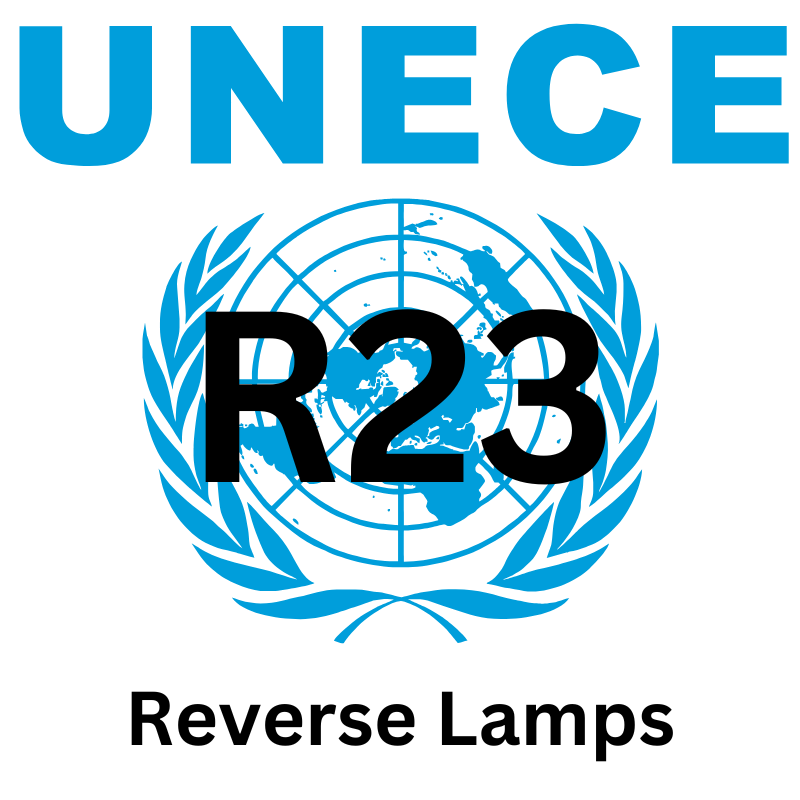Guide To: UNECE R23 - Reverse Lamps
05 July 2018

UN ECE Regulation No. 23 provides the uniform provisions for the approval of reversing and manoeuvring lamps for power-driven vehicles and their trailers. These lamps play a critical role in vehicle safety by enhancing visibility when reversing or performing slow manoeuvres, thereby helping to avoid accidents and ensuring that other road users are aware of the vehicle's movements.
Scope of the Regulation
UN ECE R23 applies to:
- Reversing Lamps: Designed to illuminate the area behind the vehicle, providing visibility while reversing and warning other road users that the vehicle is in reverse.
- Manoeuvring Lamps: Provide supplementary lighting to the side of the vehicle to assist in slow manoeuvres.
Key Features of UN ECE R23
Design and Construction:
- Reversing and manoeuvring lamps must be designed to withstand normal operating conditions, including exposure to vibrations. The lamps must provide uniform lighting and prevent glare.
- The regulation specifies photometric and geometric requirements to ensure that the emitted light is distributed properly without being too intense, thus avoiding blinding other road users.
Light Intensity and Colour:
- The light emitted by reversing lamps must meet a minimum intensity of 80 candelas along the axis of reference, while manoeuvring lamps must not exceed 500 candelas.
- Reversing and manoeuvring lamps must emit white light, as required under the regulation.
Marking and Approval:
- Reversing and manoeuvring lamps must carry the manufacturer’s trade name or mark and a unique approval number to indicate compliance with the regulation.
- The approval process includes photometric testing and other durability tests to ensure the lamps perform effectively in real-world conditions.
Testing Procedures:
- Lamps must undergo photometric testing to verify that they meet the required light intensity and distribution standards. These tests are conducted with both replaceable and non-replaceable light sources under specified voltages to ensure performance consistency.
As part of the ongoing harmonization of vehicle regulations, UN ECE R23 has been integrated into UN ECE Regulation No. 148, which consolidates several light-signalling regulations into a single framework. This consolidation simplifies the approval process for manufacturers, as all lighting and signalling requirements are now covered under one unified regulation.
Conclusion
Reversing and manoeuvring lamps are essential for vehicle safety, particularly in low-visibility or complex manoeuvring situations. Compliance with UN ECE R23 (now incorporated into R148) ensures that these lamps meet international safety standards, offering reliability and performance while promoting road safety for all users.
Guides to ECE Regulations,E-Mark,ECE Regulation 23,Reverse Lamps,